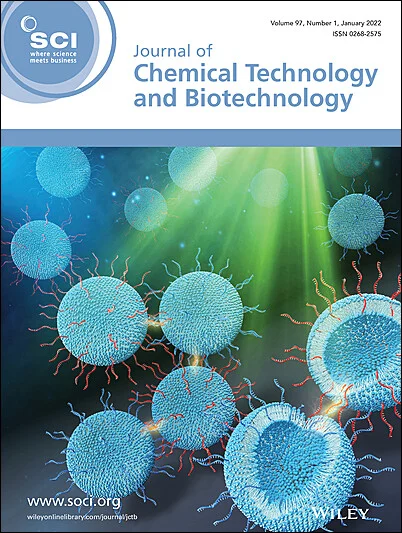Tanya Girish, Spandana V. Prasad, Nivedita I. Patil, Deepthi Shetty, Sneha Nayak
求助PDF
{"title":"纳米粒子修饰电化学传感器检测食品偶氮染料的研究进展,重点是可持续纳米材料","authors":"Tanya Girish, Spandana V. Prasad, Nivedita I. Patil, Deepthi Shetty, Sneha Nayak","doi":"10.1002/jctb.7887","DOIUrl":null,"url":null,"abstract":"<p>Azo dyes are widely employed as colorants predominantly in food and beverage industries owing to their vividity and versatility. They are the largest class of dyes and form a major group among the colourants certified by the Food and Drug Administration authority. These vibrant dyes are popular due to their stability, consistency and low cost. Despite their benefits such as improving the appearance and aesthetic value of consumer foods, they are hazardous to human health as well as the environment. They are proven to cause carcinogenic and mutagenic effects in the long run alongside causing allergic reactions. Hence, strict regulations have been brought forth in order to monitor and control the employment of these dyes in food products. Nanomaterial-based electrochemical sensors are used for azo dye detection due to their sensitivity and selectivity in determination of azo dyes in food. Preparation of nanomaterials through conventional methods produces hazardous chemicals. Hence, there is a need to devise eco-friendly routes of nanoparticle synthesis in order to ensure sustainability and circular economy. This review throws light on the efficacy of nano-based electrochemical detection of azo dyes in various food matrices and emphasizes the significance of sustainable nanomaterials. © 2025 Society of Chemical Industry (SCI).</p>","PeriodicalId":15335,"journal":{"name":"Journal of chemical technology and biotechnology","volume":"100 10","pages":"1989-2003"},"PeriodicalIF":2.4000,"publicationDate":"2025-05-19","publicationTypes":"Journal Article","fieldsOfStudy":null,"isOpenAccess":false,"openAccessPdf":"","citationCount":"0","resultStr":"{\"title\":\"Advances in food azo dye detection through nanoparticle modified electrochemical sensors with a focus on sustainable nano-materials\",\"authors\":\"Tanya Girish, Spandana V. Prasad, Nivedita I. Patil, Deepthi Shetty, Sneha Nayak\",\"doi\":\"10.1002/jctb.7887\",\"DOIUrl\":null,\"url\":null,\"abstract\":\"<p>Azo dyes are widely employed as colorants predominantly in food and beverage industries owing to their vividity and versatility. They are the largest class of dyes and form a major group among the colourants certified by the Food and Drug Administration authority. These vibrant dyes are popular due to their stability, consistency and low cost. Despite their benefits such as improving the appearance and aesthetic value of consumer foods, they are hazardous to human health as well as the environment. They are proven to cause carcinogenic and mutagenic effects in the long run alongside causing allergic reactions. Hence, strict regulations have been brought forth in order to monitor and control the employment of these dyes in food products. Nanomaterial-based electrochemical sensors are used for azo dye detection due to their sensitivity and selectivity in determination of azo dyes in food. Preparation of nanomaterials through conventional methods produces hazardous chemicals. Hence, there is a need to devise eco-friendly routes of nanoparticle synthesis in order to ensure sustainability and circular economy. This review throws light on the efficacy of nano-based electrochemical detection of azo dyes in various food matrices and emphasizes the significance of sustainable nanomaterials. © 2025 Society of Chemical Industry (SCI).</p>\",\"PeriodicalId\":15335,\"journal\":{\"name\":\"Journal of chemical technology and biotechnology\",\"volume\":\"100 10\",\"pages\":\"1989-2003\"},\"PeriodicalIF\":2.4000,\"publicationDate\":\"2025-05-19\",\"publicationTypes\":\"Journal Article\",\"fieldsOfStudy\":null,\"isOpenAccess\":false,\"openAccessPdf\":\"\",\"citationCount\":\"0\",\"resultStr\":null,\"platform\":\"Semanticscholar\",\"paperid\":null,\"PeriodicalName\":\"Journal of chemical technology and biotechnology\",\"FirstCategoryId\":\"5\",\"ListUrlMain\":\"https://scijournals.onlinelibrary.wiley.com/doi/10.1002/jctb.7887\",\"RegionNum\":4,\"RegionCategory\":\"生物学\",\"ArticlePicture\":[],\"TitleCN\":null,\"AbstractTextCN\":null,\"PMCID\":null,\"EPubDate\":\"\",\"PubModel\":\"\",\"JCR\":\"Q3\",\"JCRName\":\"BIOTECHNOLOGY & APPLIED MICROBIOLOGY\",\"Score\":null,\"Total\":0}","platform":"Semanticscholar","paperid":null,"PeriodicalName":"Journal of chemical technology and biotechnology","FirstCategoryId":"5","ListUrlMain":"https://scijournals.onlinelibrary.wiley.com/doi/10.1002/jctb.7887","RegionNum":4,"RegionCategory":"生物学","ArticlePicture":[],"TitleCN":null,"AbstractTextCN":null,"PMCID":null,"EPubDate":"","PubModel":"","JCR":"Q3","JCRName":"BIOTECHNOLOGY & APPLIED MICROBIOLOGY","Score":null,"Total":0}
引用次数: 0
引用
批量引用



 求助内容:
求助内容: 应助结果提醒方式:
应助结果提醒方式:


